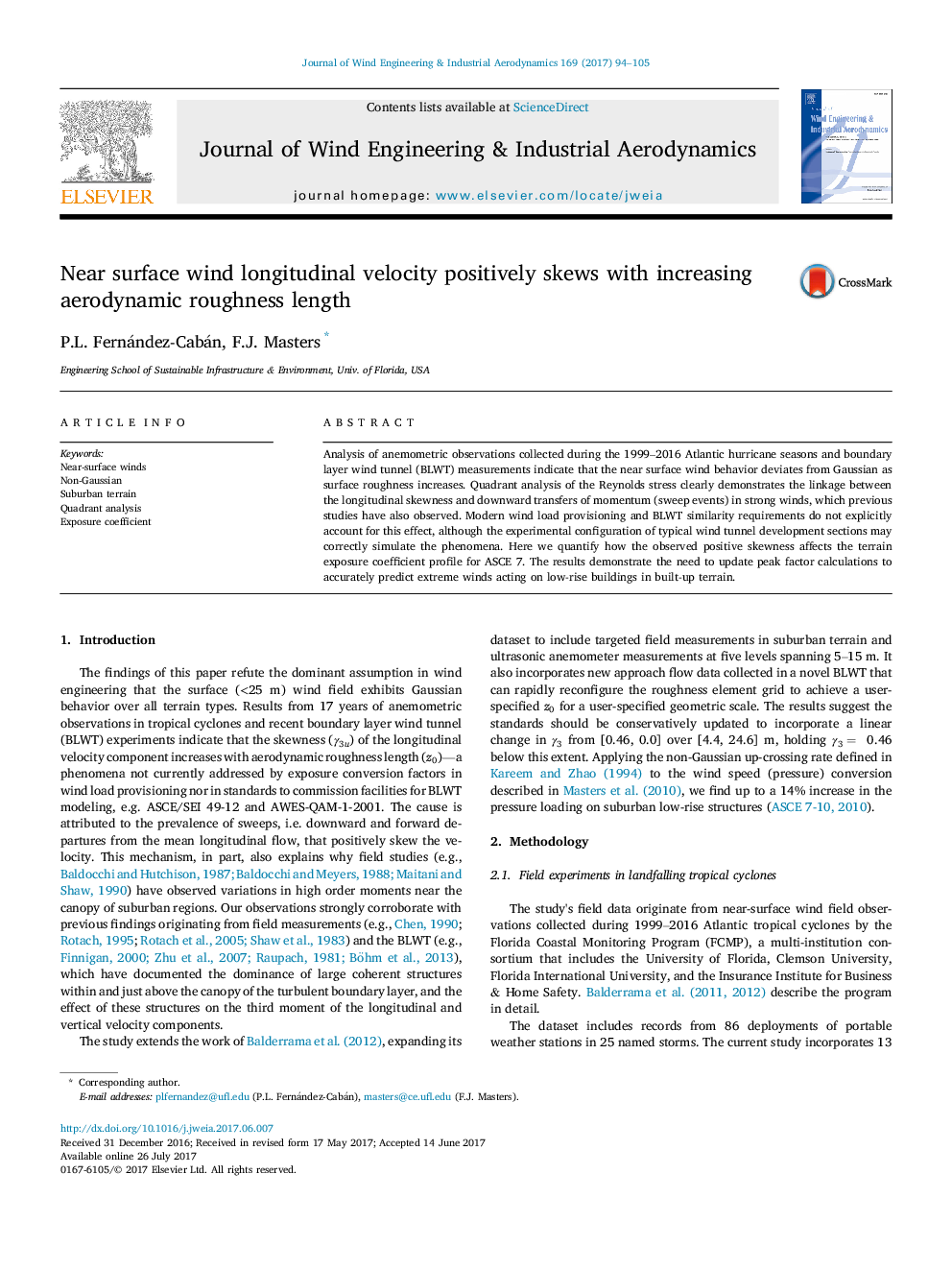| Article ID | Journal | Published Year | Pages | File Type |
|---|---|---|---|---|
| 4924843 | Journal of Wind Engineering and Industrial Aerodynamics | 2017 | 12 Pages |
Abstract
Analysis of anemometric observations collected during the 1999-2016 Atlantic hurricane seasons and boundary layer wind tunnel (BLWT) measurements indicate that the near surface wind behavior deviates from Gaussian as surface roughness increases. Quadrant analysis of the Reynolds stress clearly demonstrates the linkage between the longitudinal skewness and downward transfers of momentum (sweep events) in strong winds, which previous studies have also observed. Modern wind load provisioning and BLWT similarity requirements do not explicitly account for this effect, although the experimental configuration of typical wind tunnel development sections may correctly simulate the phenomena. Here we quantify how the observed positive skewness affects the terrain exposure coefficient profile for ASCE 7. The results demonstrate the need to update peak factor calculations to accurately predict extreme winds acting on low-rise buildings in built-up terrain.
Keywords
Related Topics
Physical Sciences and Engineering
Energy
Renewable Energy, Sustainability and the Environment
Authors
P.L. Fernández-Cabán, F.J. Masters,
